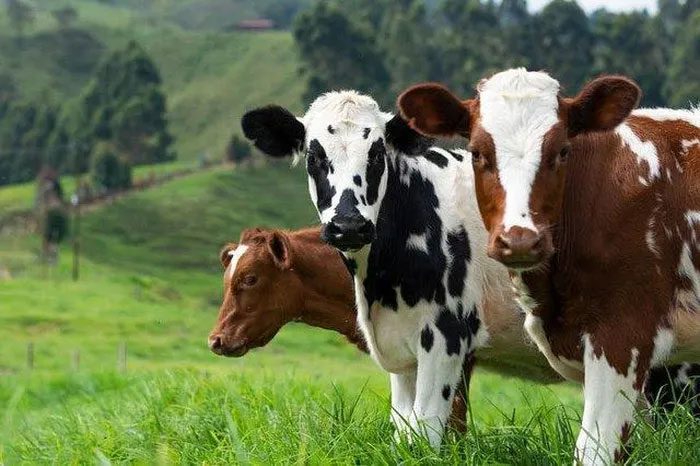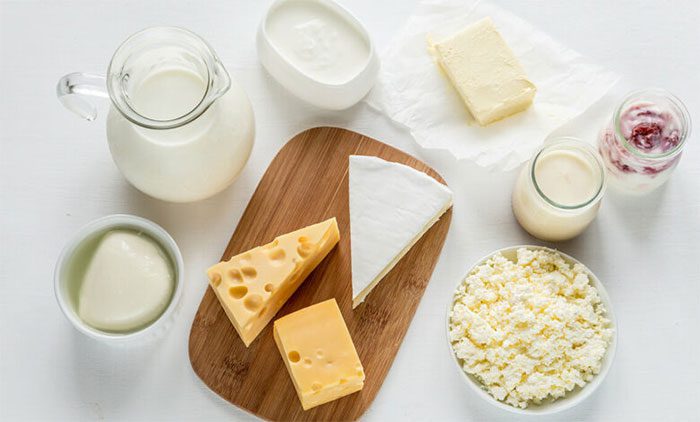The volume of cow’s milk is projected to decrease by nearly half a million tons in 2022 in Australia as many farmers are leaving the profession after years of pressure from heatwaves. In India, small-scale farmers planning to invest in cooling equipment will also have to struggle to pay for these machines. Meanwhile, producers in France have temporarily halted the production of a high-quality cheese due to parched fields that fail to provide enough feed for their cows.
The living environment in some of the world’s largest milk-producing regions is becoming drier and more challenging for these animals due to climate change. Under scorching temperatures, arid conditions, and increasing storms, the grass and crops that cows typically eat are struggling to survive. This results in cows producing less milk than before.
In the United States, some scientists estimate that climate change will cost the dairy industry $2.2 billion per year by the end of this century. This is a significant financial burden for an industry that is already struggling to make a profit. If greenhouse gas emissions remain high, a study estimates that the U.S. dairy and meat industries could suffer losses of $39.94 billion per year by the end of this century.
Additionally, there is a significant contradiction facing the global dairy industry. On one hand, demand for dairy products is increasing in many developing countries, particularly from the middle class. On the other hand, environmentally friendly policies in many regions do not encourage farmers to expand production. When supply fails to meet demand, prices rise, leading to a risk of shortages of key dairy products such as cheese, cream, or yogurt.
Mary Ledman, global dairy strategist at Rabobank, stated: “Climate change increases the instability of milk supply, and the consequences of this could exacerbate food insecurity.”

The global dairy farming industry is suffering significant losses due to climate change. (Photo: UNSPLASH).
Animals Are Under Pressure
Currently, even though the livestock industry has spent a lot of money on cooling systems for their herds, it seems that this expenditure is still insufficient given the extreme heat conditions.
Tom Barcellos, who has been raising and milking animals for 45 years in Tipton, California, has a modern cooling system at his farm. Complete with fans and misting systems, this setup can even adjust wind direction. However, during heatwaves, milk production at his farm still declines.
If temperatures are higher in the evenings and cows feel more uncomfortable, milk production can drop by up to 15%, even 20% on the hottest days, Barcellos said. His farm currently has 1,800 dairy cows.
In India, a similar situation is unfolding. Sharad Bhai Harendra Bhai Pandya and his brother have over 40 cows in Gujarat, western India.
Mr. Pandya raises his livestock on a farm equipped with a misting cooling system, but milk production there has still decreased by more than 30% during the sweltering summer heat.
Ranu Bhai Bharvad, a dairy farmer in India, does not even have a barn for his herd of 35 cows. His livestock can only seek shade to cope with the intense heat.
Bharvad’s situation is not uncommon. To date, India is the largest milk producer in the world, accounting for nearly a quarter of the global supply. The country’s massive milk volume largely comes from tens of millions of small farmers with modest numbers of animals.
Threat to Dairy Product Diversity
The challenges dairy farmers face are impacting their ability to produce certain products. In France, a premium cheese known as Salers was no longer produced in 2022. Salers must be made from the milk of grass-fed cows, while this year’s heatwave has devastated many of the country’s pastures.

The challenges dairy farmers face are affecting their ability to produce certain products.
While the absence of one cheese may not be an emergency, the current situation in the long term could cause significant disruptions in the market as extreme temperatures continue.
Nate Donnay, director of dairy markets at StoneX Group, stated: “In the next 5 to 15 years, we could see a gradual decline in milk production in water-scarce regions. In 15 to 30 years, yields in those areas will decrease.”
This trend will lead to higher dairy prices and potential shortages of some dairy products.
Melvin Medeiros, a farmer in California, a leading milk-producing state in the U.S., mentioned that extreme weather is likely to change farming practices in the state over the next decade. He anticipates a decrease in the number of cows as arable land diminishes.
Medeiros said: “We have not addressed the issues that have persisted for over 50 years. Now we have no choice but to reduce production or find ways to cope with the current situation.”



















































